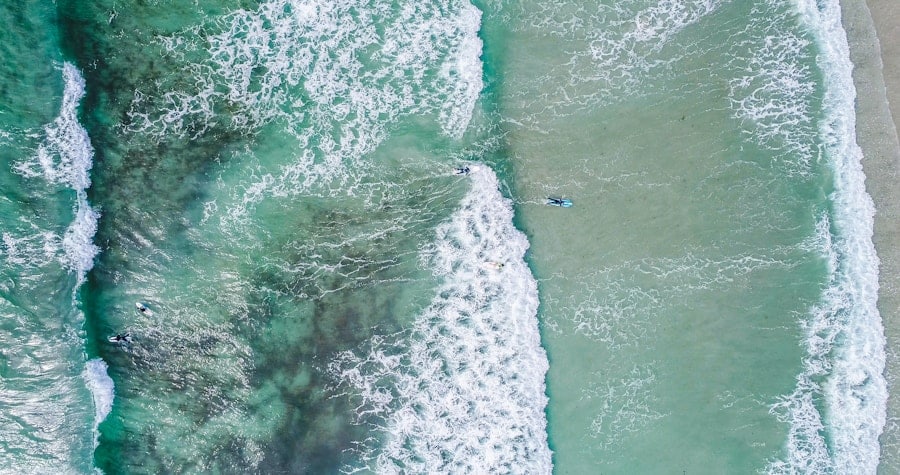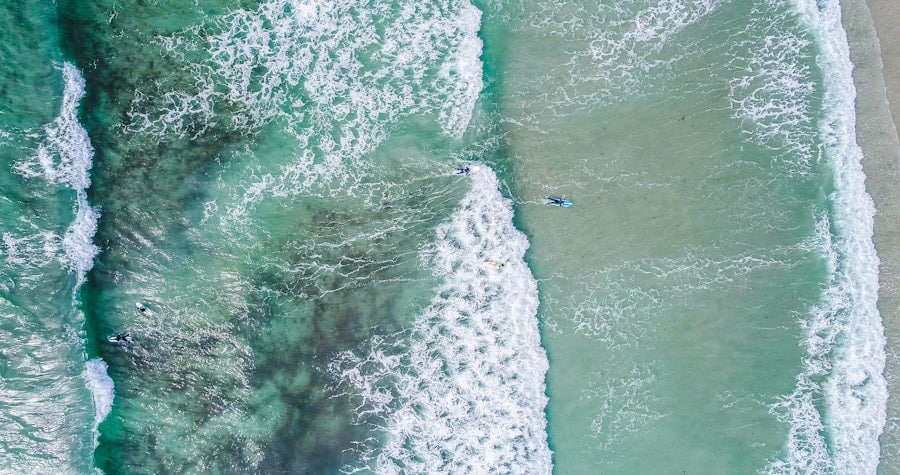Artificial Intelligence (AI) and satellite technology have emerged as transformative forces in various fields, including environmental monitoring and management. The integration of these two domains has opened new avenues for understanding and addressing complex global challenges, particularly in the context of ocean health. As the planet’s oceans face unprecedented threats from climate change, pollution, and overfishing, the need for effective monitoring and management strategies has never been more critical.
AI, with its ability to analyze vast datasets and identify patterns, complements satellite technology, which provides comprehensive and real-time observations of the Earth’s surface. Satellite technology has evolved significantly since the launch of the first artificial satellite, Sputnik, in 1957. Today, a constellation of satellites equipped with advanced sensors and imaging capabilities continuously monitors the Earth’s oceans.
These satellites collect a wealth of data, including sea surface temperature, chlorophyll concentration, and ocean currents. When combined with AI algorithms, this data can be processed and analyzed at an unprecedented scale, enabling researchers and policymakers to gain insights into ocean health that were previously unattainable. This synergy between AI and satellite technology is paving the way for innovative solutions to protect and preserve our oceans.
Key Takeaways
- AI and satellite technology play a crucial role in monitoring and protecting the health of our oceans.
- Monitoring ocean health is important for understanding and addressing environmental issues such as climate change, pollution, and overfishing.
- AI and satellite technology are used to track ocean temperature, sea level rise, marine biodiversity, and illegal fishing activities.
- The use of AI and satellite technology for ocean monitoring provides real-time data, cost-effectiveness, and global coverage.
- Challenges and limitations of AI and satellite technology in ocean monitoring include data accuracy, processing limitations, and accessibility in remote areas.
The Importance of Monitoring Ocean Health
The Importance of Monitoring Ocean Health
Monitoring these changes is essential for understanding the current state of ocean health and for developing effective conservation strategies. Monitoring ocean health involves assessing various indicators, including water quality, biodiversity, and ecosystem productivity.
Indicators of Ocean Health
For instance, harmful algal blooms can lead to dead zones where marine life cannot survive, while overfishing can disrupt food webs and lead to species extinction. By tracking these indicators over time, scientists can identify trends and make informed predictions about future conditions.
Early Detection and Intervention
Furthermore, monitoring allows for the early detection of environmental changes, enabling timely interventions that can mitigate negative impacts on marine ecosystems.
How AI and Satellite Technology are Used to Monitor Ocean Health
The application of AI in conjunction with satellite technology has revolutionized the way ocean health is monitored. Satellites equipped with remote sensing instruments can capture high-resolution images and data across vast areas of the ocean. This data is then processed using AI algorithms that can analyze patterns and anomalies that may indicate changes in ocean health.
For example, machine learning techniques can be employed to classify different types of marine habitats based on satellite imagery, allowing researchers to map ecosystems more accurately. One notable application is the use of AI to analyze sea surface temperature data collected by satellites. Variations in sea surface temperature can indicate shifts in ocean currents or the onset of phenomena such as El Niño or La Niña, which have far-reaching effects on global weather patterns.
By employing AI models that incorporate historical data, scientists can predict these events with greater accuracy, providing valuable information for fisheries management and disaster preparedness.
The Benefits of Using AI and Satellite Technology for Ocean Monitoring
The integration of AI and satellite technology offers numerous benefits for monitoring ocean health. One significant advantage is the ability to collect and analyze data at an unprecedented scale. Traditional methods of ocean monitoring often rely on localized sampling, which can be time-consuming and limited in scope.
In contrast, satellites provide a global perspective, capturing data from remote areas that are difficult to access by ship or buoy. Moreover, AI enhances the efficiency of data processing. With vast amounts of data generated by satellites daily, manual analysis is impractical.
AI algorithms can quickly sift through this data to identify trends and anomalies, allowing researchers to focus on significant findings rather than being overwhelmed by raw information. This capability not only accelerates research but also enables real-time monitoring, which is crucial for responding to environmental crises as they unfold.
Challenges and Limitations of AI and Satellite Technology in Ocean Monitoring
Despite the promising potential of AI and satellite technology in monitoring ocean health, several challenges and limitations persist. One major challenge is the quality and accuracy of satellite data. While advancements in sensor technology have improved data resolution, factors such as cloud cover or atmospheric interference can hinder accurate readings.
For instance, optical sensors may struggle to capture clear images during overcast conditions, leading to gaps in data that could affect analyses. Additionally, the complexity of marine ecosystems poses a challenge for AI algorithms. Oceans are dynamic environments influenced by numerous factors, including temperature, salinity, currents, and human activities.
Developing AI models that can accurately account for these variables requires extensive training data and sophisticated algorithms. Furthermore, there is a risk of overfitting models to specific datasets, which may limit their applicability to broader contexts or different geographic regions.
Case Studies: Successful Applications of AI and Satellite Technology in Ocean Health Monitoring
Tracking Coral Reef Health in the Caribbean Sea
Several case studies demonstrate the successful application of AI and satellite technology in monitoring ocean health. One notable example is the use of satellite imagery combined with machine learning to track coral reef health in the Caribbean Sea.
By training machine learning models on historical data, they were able to predict future bleaching events with remarkable accuracy, enabling targeted conservation efforts.
Monitoring Illegal Fishing Activities
Another compelling case study involves monitoring illegal fishing activities using satellite data and AI algorithms. Organizations like Global Fishing Watch leverage satellite technology to track fishing vessels’ movements across the globe. By analyzing patterns in vessel behavior using machine learning techniques, they can identify suspicious activities indicative of illegal fishing practices.
Protecting Marine Biodiversity
This information is invaluable for regulatory agencies seeking to enforce sustainable fishing practices and protect marine biodiversity. The use of AI and satellite technology in monitoring ocean health has far-reaching implications for the conservation of our planet’s vital ecosystems.
Future Developments and Innovations in AI and Satellite Technology for Ocean Health Monitoring
The future of AI and satellite technology in ocean health monitoring holds great promise as advancements continue to emerge. One area of innovation is the development of more sophisticated sensors capable of capturing a wider range of environmental parameters. For instance, next-generation satellites may incorporate multispectral or hyperspectral imaging capabilities that allow for more detailed assessments of water quality and phytoplankton dynamics.
Moreover, as AI algorithms become increasingly refined, their ability to integrate diverse datasets will improve significantly. Future models may combine satellite observations with in-situ measurements from buoys or autonomous underwater vehicles (AUVs), creating a more comprehensive picture of ocean health. This integration will enhance predictive modeling capabilities, enabling scientists to forecast changes in marine ecosystems with greater precision.
The Role of AI and Satellite Technology in Protecting Our Oceans
The intersection of AI and satellite technology represents a powerful toolset for monitoring ocean health in an era marked by environmental challenges. By harnessing these technologies, researchers can gain critical insights into the state of our oceans and develop effective strategies for conservation and management. As we continue to face pressing issues such as climate change and biodiversity loss, the role of AI and satellite technology will be indispensable in safeguarding our oceans for future generations.
The ongoing advancements in these fields promise not only enhanced monitoring capabilities but also a deeper understanding of complex marine systems. As we look ahead, fostering collaboration between scientists, policymakers, and technology developers will be essential to maximize the potential of AI and satellite technology in protecting our oceans. Through concerted efforts and innovative approaches, we can work towards a sustainable future where healthy oceans thrive alongside human communities.
In addition to using AI and satellite technology to monitor ocean health, researchers are also utilizing advanced software tools to protect our digital world. According to enicomp.
Just as we rely on technology to monitor the health of our oceans, we must also prioritize cybersecurity to protect our digital assets.
FAQs
What is AI and satellite technology?
AI (Artificial Intelligence) refers to the simulation of human intelligence in machines that are programmed to think and act like humans. Satellite technology involves the use of artificial satellites in space for various purposes such as communication, navigation, and Earth observation.
How are AI and satellite technology used to monitor ocean health?
AI and satellite technology are used to monitor ocean health by collecting and analyzing data on various ocean parameters such as sea surface temperature, ocean color, and sea level. This data helps scientists and researchers to understand the health of the oceans and identify any changes or anomalies that may indicate environmental issues.
What are the benefits of using AI and satellite technology for monitoring ocean health?
The use of AI and satellite technology for monitoring ocean health provides several benefits, including the ability to collect large amounts of data over vast ocean areas, the ability to monitor changes in real-time, and the ability to identify trends and patterns that may not be visible through traditional methods.
What are some examples of how AI and satellite technology have been used to monitor ocean health?
Examples of how AI and satellite technology have been used to monitor ocean health include tracking the movement of marine debris, monitoring the impact of climate change on ocean ecosystems, and identifying areas of illegal fishing activity.
What are the future prospects for AI and satellite technology in monitoring ocean health?
The future prospects for AI and satellite technology in monitoring ocean health are promising, with advancements in technology leading to improved data collection and analysis capabilities. This will enable better understanding of ocean health and more effective conservation and management efforts.



